The Key Technology of Smart Energy System and Its Disciplinary Teaching Reform Measures
Abstract
1. Introduction
2. Key Technologies and Disciplinary Characteristics of Smart Energy System
2.1. Characteristics of the Energy Internet
2.1.1. Essential Feature
2.1.2. Technical Feature
- (1)
- A variety of energy systems achieve complementary advantages, avoid the second conversion of energy and consumption loss and effectively improve the utilization efficiency of comprehensive energy, which meet the requirements of the era of energy conservation and low carbon [41].
- (2)
- All kinds of small-scale renewable energy are incorporated into the grid of the energy system, which improves the level of consumption and fully mobilizes all environmentally friendly energy sources that can be put into use [42].
2.1.3. Potential Problem
2.2. Energy Internet Technology System and Specific Related Technologies
2.3. The Important Pillar of the Energy Internet—Electric Vehicles
3. Talent Training Model and Reform Direction of Electrical Engineering Subject under the Background of Intelligent Energy System
3.1. Advantages of Carrying out Teaching Reform Oriented to Energy Internet Based on Electrical Engineering Major
3.2. The Current Situation of the Establishment and Construction of Energy Internet Engineering Major (Direction)—Taking China as an Example
4. Reform Measures and Challenges of Smart Energy System Discipline
4.1. Thoughts on Teaching Reform
4.2. Concrete Measures of the Teaching Reform
4.2.1. Energy Internet Major (Direction) Training Program
4.2.2. Course System of Energy Internet Major (Direction)
4.2.3. Teaching Model and Examination Form
4.2.4. Faculty and Teaching Resources
5. Value and Significance of Teaching Reform and the Future Work
5.1. Value and Significance of Teaching Reform
5.2. Work to Be Done in the Future
6. Conclusions
Author Contributions
Funding
Institutional Review Board Statement
Informed Consent Statement
Data Availability Statement
Conflicts of Interest
References
- Ahmad, T.; Zhang, D. A critical review on comparative global historical energy consumption and future requirement: The story told so far. Energy Rep. 2020, 6, 1973–1991. [Google Scholar] [CrossRef]
- Hui, H.; Zhu, G.; Wei, C.; Zhang, Y.; Zhao, J.; Dong, Z. Energy internet risk assessment framework. In Proceedings of the Power & Energy Engineering Conference (APPEEC), Brisbane, Australia, 14 January 2016. [Google Scholar]
- Zhang, N.; Yang, G.; Wang, D.; Jin, T.; Li, X.; Zhang, Y. Discussion on the distributed intelligent development of energy internet. In Proceedings of the 2018 2nd IEEE Conference on Energy Internet and Energy System Integration (EI2), Beijing, China, 20–22 October 2018. [Google Scholar]
- Wu, X.; Ge, B.C.; Zang, T.; Liu, Y.; Zhang, Z.; Yang, F. Management system research of large-scale new energy development based on energy internet. In Proceedings of the 2017 IEEE Conference on Energy Internet and Energy System Integration (EI2), Beijing, China, 26–28 November 2017. [Google Scholar]
- Tang, Y.; Mu, Z.; Du, C.; Lei, T. The Energy Accumulation of New Energy Internet Oriented to Customer Side. Iop Conf. 2018, 170, 042123. [Google Scholar] [CrossRef]
- Li, B.; Yang, S.; Duan, F.; Yan, K. The Key Technologies about Energy Internet. In Proceedings of the 2015 2nd International Conference on Electrical, Computer Engineering and Electronics, Jinan, China, 24 June 2015; pp. 1506–1509. [Google Scholar]
- Liang, J.; Luo, Y.; Yang, D.; Guo, X. Overview on Implementation Planning of Energy Internet Based on Energy Hub. In Proceedings of the 2017 5th International Conference on Machinery, Materials and Computing Technology, Beijing, China, 25–26 March 2017; Volume 126, pp. 738–744. [Google Scholar]
- Wu, S.; Ji, G.; Duan, Q. Development Strategy of Energy Internet Industry for Power Grid Enterprises. In International Conference on Frontier Computing; Springer: Singapore, 2019. [Google Scholar]
- Hao, L.; Long, W. Future Energy System in Low-Carbon Community-Energy Internet. In Proceedings of the International Conference on Computer Distributed Control & Intelligent Environmental Monitoring, Changsha, China, 19–20 February 2011. [Google Scholar]
- Liu, X.; Liao, Z.; Chen, J.; Shen, H. Architecture of A Mobile Energy Internet. IOP Conf. Ser. Earth Environ. Sci. 2020, 428, 012003. [Google Scholar] [CrossRef]
- Liu, D.; Xu, Z.; Li, C.; Shen, H. Reform and Exploration for Practical Teaching of Electrical Engineering and Automation. In Proceedings of the 2017 International Conference on Economics and Management, Education, Humanities and Social Sciences (EMEHSS 2017), Hangzhou, China, 15–16 April 2017. [Google Scholar]
- Haiwang, C.; Chaogai, X.; Lili, D. Exploration on electrical and electronic teaching reform by information technology. In Proceedings of the 2010 International Conference on Educational and Information Technology (ICEIT 2010), Qingdao, China, 17–19 September 2010. [Google Scholar]
- Ge, L.; Wang, Y.Q.; Qi, J.; Wang, H.; Lin, Q.; Peng, Y. The Content, Frameworks and Key Technologies of Power Internet of Things for Urban Energy Internet. Electr. Power Constr. 2019, 40, 91–98. [Google Scholar]
- Zhang, Z.; Liu, Z.; Zhang, X.; Yin, S.; Wang, Y.; Xing, Y.; Dong, X.; Hu, E.; Li, Q. Model Construction and Construction Key Issues for Energy Internet Ecosystem. In Proceedings of the 2021 IEEE 5th Conference on Energy Internet and Energy System Integration (EI2), Taiyuan, China, 22–24 October 2021. [Google Scholar]
- Tan, T.; Shi, J.; Liu, Y.; Zhang, J. Characteristics of Industrial Park Energy Internet and Key Technologies of Its Energy Management Platform. Electr. Power Constr. 2017, 12, 20–30. [Google Scholar]
- Liu, T.; Zhang, D.; Dai, H.; Wu, T. Intelligent modeling and optimization for smart energy hub. IEEE Trans. Ind. Electron. 2019, 66, 9898–9908. [Google Scholar] [CrossRef]
- Quan, T.; Xu, W.; Li, S.; Ye, X.; Xiang, Y.; Liu, J.Y.; Niu, Y.; Honh, J.H. Urban energy internet: Concept and key technology. In Proceedings of the 2016 3rd International Conference on Systems and Informatics (ICSAI), Shanghai, China, 19–21 November 2016. [Google Scholar]
- Zhu, H.; Goh, H.H.; Zhang, D.; Ahmad, T.; Liu, H.; Wang, S.Y.; Li, S.W.; Liu, T.H.; Dai, H.; Wu, T. Key technologies for smart energy systems: Recent developments, challenges, and research opportunities in the context of carbon neutrality. J. Clean. Prod. 2022, 331, 129809. [Google Scholar] [CrossRef]
- Chen, X.; Fu, W.; Li, Y. Operation Strategy of Power System Based on Energy Internet. In Innovative Computing; Springer: Singapore, 2020. [Google Scholar]
- Xie, Y.; Wu, J.; Zhang, X.; Zhou, W. Exploration on the Development Model of Energy Internet in Large Region. In Proceedings of the 2018 2nd IEEE Conference on Energy Internet and Energy System Integration (EI2), Beijing, China, 20–22 October 2018. [Google Scholar]
- Zhu, Y.; Wang., J.; Wu, K. Open System Interconnection for Energy: A Reference Model of Energy Internet. In Proceedings of the 2017 IEEE International Conference on Energy Internet (ICEI), Beijing, China, 17–21 April 2017. [Google Scholar]
- Zhu, J.; Xie, P.; Xuan, P.; Zou, J.; Yu, P.F. Renewable energy consumption technology under energy internet environment. In Proceedings of the 2017 IEEE Conference on Energy Internet and Energy System Integration (EI2), Beijing, China, 26–28 November 2017. [Google Scholar]
- Liu, T.; Zhang, D.; Wu, T. Standardised modelling and optimisation of a system of interconnected energy hubs considering multiple energies—Electricity, gas, heating, and cooling. Energy Convers. Manag. 2020, 205, 112410. [Google Scholar] [CrossRef]
- Ni, J.; He, G.; Lu, H.; Yang, D.; Chen, Y. Featured town energy internet design based on the flexible demand response resources. In Proceedings of the 2017 IEEE Conference on Energy Internet and Energy System Integration (EI2), Beijing, China, 26–28 November 2017. [Google Scholar]
- Wu, Y.; Wu, Y.P.; Guerrero, J.M.; Vasquez, J.C. A comprehensive overview of framework for developing sustainable energy internet: From things-based energy network to services-based management system. Renew. Sustain. Energy Rev. 2021, 150, 111409. [Google Scholar] [CrossRef]
- Guo, M.; Xia, M.C.; Chen, Q.F. A review of regional energy internet in smart city from the perspective of energy community. Energy Rep. 2021, 8, 161–182. [Google Scholar] [CrossRef]
- Zhou, K.; Yang, S.; Shao, Z. Energy Internet: The business perspective. Appl. Energy 2016, 178, 212–222. [Google Scholar] [CrossRef]
- Jiang, Z.; Han, J.; Liu, W.; Chen, Z.; Li, N.; Wang, S.Y.; Zhang, X.; Liu, C. Energy Internet—A New Driving Force for Sustainable Urban Development. Energy Procedia 2018, 152, 1206–1211. [Google Scholar]
- Li, J.; Herdem, M.S.; Nathwani, J.; Wen, J.Z. Methods and applications for Artificial Intelligence, Big Data, Internet of Things, and Blockchain in smart energy management. Energy AI 2023, 11, 100208. [Google Scholar] [CrossRef]
- Wei, Y.; Dai, S.; Yu, J.; Wu, S.; Wang, J.Y. Research on Status and Prospects of Battery Energy Storage Stations on Energy Internet. In Proceedings of the 2019 IEEE 3rd Information Technology, Networking, Electronic and Automation Control Conference (ITNEC), Chengdu, China, 15–17 March 2019. [Google Scholar]
- Cheng, L.; Ji, X.; Zhang, F.; Liang, C.H.; He, H.L. Internet information applied in the energy internet planning: A review and outlook. In Proceedings of the IEEE Conference on Energy Internet & Energy System Integration, Beijing, China, 26–28 November 2017; pp. 1–5. [Google Scholar]
- Zhang, D.; Zhu, H.Y.; Zhang, H.C.; Goh, H.H.; Liu, H.; Wu, T. Multi-objective optimization for smart integrated energy system considering demand responses and dynamic prices. IEEE Trans. Smart Grid 2022, 13, 1100–1112. [Google Scholar] [CrossRef]
- Su, J.; Huang, W.; Qu, X.; Zhang, T.; Wang, L.; Xu, S.; Yan, X.; Ma, J. Analysis of Energy Efficiency Evaluation Indexes for Energy Internet. In Proceedings of the 2019 IEEE Sustainable Power and Energy Conference (iSPEC), Beijing, China, 21–23 November 2019. [Google Scholar]
- Ren, L.; Wang, L.; Zhao, X.G. Focus on the Development of Energy Internet in China. In Proceedings of the 2015 International Conference on Applied Science and Engineering Innovation, Jinan, China, 30–31 August 2015. [Google Scholar]
- Chen, Z.X.; Zhang, Y.J.; Cai, Z.X.; Li, L.C.; Liu, P. Characteristics and technical challenges in energy Internet cyber-physical system. In Proceedings of the 2016 IEEE PES Innovative Smart Grid Technologies Conference Europe (ISGT-Europe), Ljubljana, Slovenia, 9–12 October 2016. [Google Scholar]
- Chen, G. Time-efficient strategic power dispatch for district cooling systems considering the spatial-temporal evolution of cooling load uncertainties. CSEE J. Power Energy Syst. 2021, 5, 037. [Google Scholar]
- Lin, C.; Ning, Q.; Fang, Z.; Kong, H.C.; Huang, X.J. Energy Internet: Concept and practice exploration. In Proceedings of the 2017 IEEE Conference on Energy Internet and Energy System Integration (EI2), Beijing, China, 26–28 November 2017. [Google Scholar]
- Zhu, C.; Zhao, L.; Li, Y.; Sha, Z.C. Analysis and Study on the Architecture for Integrated Smarter Energy Management System. In Proceedings of the 2018 China International Conference on Electricity Distribution (CICED), Tianjin, China, 17–19 September 2018. [Google Scholar]
- Hu, M.; Dou, X.; Zhang, P. Research on Comprehensive Evaluation of Micro Energy Internet Based on Synergetic. IOP Conf. Ser. Mater. Sci. Eng. 2019, 677, 042052. [Google Scholar] [CrossRef]
- Ding, R.; Xing, B. Research and Implementation of Energy Harvesting Nodes in Internet of Things. Video Eng. 2014, 8, 62–65. [Google Scholar]
- Wang, C.F.; Cao, J.; Li, F. Space Energy Internet System. In Proceedings of the 2017 4th International Conference on Information Science and Control Engineering (ICISCE), Changsha, China, 21–23 July 2017. [Google Scholar]
- Zhang, D.; Liu, T. A multi-step modeling and optimal operation calculation method for large-scale energy hub model considering two types demand responses. IEEE Trans. Smart Grid 2019, 10, 6735–6746. [Google Scholar] [CrossRef]
- Zheng, Y.; Luo, Y.; Shi, Y.; Cai, N.; Jiao, L.; Guo, D.; Lyu, Y.; Yin, H. Design of energy internet based on information internet. In Proceedings of the 2017 IEEE Conference on Energy Internet and Energy System Integration (EI2), Beijing, China, 26–28 November 2017. [Google Scholar]
- Zhang, W.; Li, J.; Zhou, J. The Requirement and the Key Technologies of Communication Network in Internet of Energy. In International Conference on Human Centered Computing; Springer: Cham, Switzerland, 2016. [Google Scholar]
- Zhang, D.; Zhao, J.; Dai, W.; Wang, C.; Jian, J.; Shi, B.; Wu, T. A feasible region evaluation method of renewable energy accommodation capacity. Energy Rep. 2021, 7, 1513–1520. [Google Scholar] [CrossRef]
- Cai, J.; Shuxian, L.I.; Fan, B.; Tang, L. Blockchain Based Energy Trading in Energy Internet. Electr. Power Constr. 2017, 38, 24–31. [Google Scholar]
- Zhang, Y. Research on Power Marketing Mode from the Perspective of Energy Internet. In Proceedings of the 2018 2nd IEEE Conference on Energy Internet and Energy System Integration (EI2), Beijing, China, 20–22 October 2018. [Google Scholar]
- Dunnan, L.; Mi, L.; Yaru, M.; Zhou, H.; Li, J. Transaction analysis of multi market players based on global energy Internet. IOP Conf. Ser. Earth Environ. Sci. 2019, 242, 022020. [Google Scholar] [CrossRef]
- Li, Z.; Pang, B.; Zhao, J.; Dunnan, L.; Li, G. Research on Energy Internet Market Trading System. IOP Conf. Ser. Earth Environ. Sci. 2019, 371, 042038. [Google Scholar] [CrossRef]
- Dou, J.; Long, Z.; Meng, S.; Zeng, M.; Sung, C.J. New Business Models for Power Grid Enterprises in the Context of Urban Energy Internet. In Proceedings of the 2017 International Conference on Material Science, Energy and Environmental Engineering (MSEEE 2017), Xi’an, China, 26–27 August 2017. [Google Scholar]
- Zhang, X.-Y.; Kuenzel, S.; Córdoba-Pachón, J.-R.; Watkins, C. Privacy-Functionality Trade-off: A Privacy-Preserving Multi-Channel Smart Metering System. Energies 2020, 13, 3221. [Google Scholar] [CrossRef]
- Zhang, X.-Y.; Córdoba-Pachón, J.-R.; Guo, P.; Watkins, C.; Kuenzel, S. Privacy-Preserving Federated Learning for Value-Added Service Model in Advanced Metering Infrastructure. IEEE Trans. Comput. Soc. Syst. 2022. [Google Scholar] [CrossRef]
- Fan, Y.; Pei, G.; Duan, M.; Liu, Y.Y.; Wu, X.; Zhang, Z. Key technologies and development prospect of urban energy internet. In Proceedings of the 2017 IEEE Conference on Energy Internet and Energy System Integration (EI2), Beijing, China, 26–28 November 2017. [Google Scholar]
- Wang, S.; Xu, K.; Xu, J.; Chi, F.; Zhang, X.; Zhang, L. Comprehensive theoretical and evaluation system of integrated energy system. IOP Conf. Ser. Earth Environ. Sci. 2018, 168, 012035. [Google Scholar] [CrossRef]
- Cao, J.; Yang, M.; Zhang, D.; Ming, Y.; Meng, K.; Chen, Z.; Lin, C. Energy Internet: An Infrastructure for Cyber-Energy Integration. South. Power Syst. Technol. 2014, 8, 1–10. [Google Scholar]
- Zhang, X.; Wang, H.; Wang, B.; Kun, H. Research on the Framework of the New Urban Energy Internet Demonstration Project. IOP Conf. Ser. Earth Environ. Sci. 2021, 647, 012142. [Google Scholar] [CrossRef]
- Lei, M.; Yang, D.; Sun, Y.; Zhang, H.G. Construction of Energy Hub Model and Optimal Scheduling of Energy Internet. In Proceedings of the 2017 36th Chinese Control Conference (CCC), Dalian, China, 26–28 July 2017. [Google Scholar]
- Zeng, M.I.; Han, X.; Sun, J.; Dong, L.; Huang, W. Key Issues and Prospects of Automated Demand Response under Energy Internet Background. Electr. Power Constr. 2017, 38, 21–27. [Google Scholar]
- Wang, J.; Sun, S. Research on block chain technology in energy Internet. In Proceedings of the 2nd International Conference on Computer Engineering, Information Science & Application Technology (ICCIA 2017), Wuhan, China, 8–9 July 2017. [Google Scholar]
- Li, J.; Zhang, P.; Peng, Y.; Li, X.; Zhang, L.; Sun, Y. Energy Internet Business Ecosystem Analysis. In Proceedings of the 3rd Conference on Energy Internet and Energy System Integration (EI2), Changsha, China, 8–10 November 2019. [Google Scholar]
- Liu, K. Development Path Exploration of Energy Internet. Electr. Power Constr. 2015, 36, 5–10. [Google Scholar]
- Gao, Z.; Qiang, Y.; Tang, B.; Wang, J. Design of Layered Network for Information Communication of Energy Internet. In Proceedings of the IEEE International Conference on Computer and Communication Engineering Technology, Beijing, China, 18–20 August 2018. [Google Scholar]
- Sun, Z.; Liang, W. A Survey of Communication Technologies for the Energy Local Area Network in the Energy Internet. In Proceedings of the 2016 6th International Conference on Advanced Design and Manufacturing Engineering (ICADME 2017), Zhuhai, China, 23–24 July 2016. [Google Scholar]
- Wang, L.; Han, S.; Guo, L.; Huo, M.; Chen, H.; Chen, G. Analysis of typical characteristics and main functions of urban energy internet under city energy reformation. IOP Conf. Ser. Earth Environ. Sci. 2020, 585, 012039. [Google Scholar] [CrossRef]
- Xin, S.; Chen, M.; Zhu, Y.; Li, T. Research on the Application of Blockchain Technology in Energy Internet. In Proceedings of the 2018 2nd IEEE Conference on Energy Internet and Energy System Integration (EI2), Beijing, China, 20–22 October 2018. [Google Scholar]
- Wu, J.; Tran, N. Application of Blockchain Technology in Sustainable Energy Systems: An Overview. Sustainability 2018, 10, 3067. [Google Scholar] [CrossRef]
- Li, S.; Li, S.; Qu, D. Discussion on Integration Technology for Local Energy Internet–ScienceDirect. Energy Procedia 2018, 145, 558–563. [Google Scholar]
- Liu, D.N.; Xu, E.F. Technical System of Energy Big Data Analyzing in the Context of Energy Internet. In Proceedings of the 2017 5th International Conference on Mechanical, Automotive and Materials Engineering (CMAME), Guangzhou, China, 1–3 August 2017. [Google Scholar]
- Khizir, M.; Graham, E.T.; Sayidul, M.; Hossain, M.J. Integration of electric vehicles and management in the internet of energy. Renew. Sustain. Energy Rev. 2017, 82, 4179–4203. [Google Scholar]
- Feng, X.; Hu, J. Research on the identification and management of vehicle behaviour based on Internet of things technology. Comput. Commun. 2019, 156, 68–76. [Google Scholar] [CrossRef]
- Mohamed, L.; Tiago, A.; Mohammad S, J.; Gerardo J, O.; Claudio, M.; Joao, P.S.C. Coordinating energy management systems in smart cities with electric vehicles. Appl. Energy 2022, 307, 118241. [Google Scholar]
- Wang, H.; Fu, Q.C. Teaching Reform and Practice of Electrical Engineering and Electronics Curriculum to Strengthen Engineering Quality and Innovative Ability. In Proceedings of the 2015 International Conference on Advanced Management Science and Information Engineering (AMSIE 2015), Hong Kong, China, 20–21 September 2015. [Google Scholar]
- Igbinovia, F.O.; Kupka, J. The Prospect of the Internet of Renewable Energy (IoRE) in Electricity Networks. In Proceedings of the IEEE International Symposium on Technology and Society (ISTAS), Medford, MA, USA, 15–16 November 2019. [Google Scholar]
- Zhang, S.; Zeng, M.; Liu, D.; Li, Y. Complex Adaptive Characteristics of Energy Internet in Bilateral Evolution Process. Electr. Power Constr. 2017, 38, 34–40. [Google Scholar]
- Zhang, D.; Zhu, H.; Zhang, H.; Goh, H.H.; Liu, H.; Wu, T. An optimized design of residential integrated energy system considering the power-to-gas technology with multi-functional characteristics. Energy 2022, 238, 121774. [Google Scholar] [CrossRef]
- Zhou, X.; Wang, F.; Ma, Y. An overview on energy internet. In Proceedings of the 2015 IEEE International Conference on Mechatronics and Automation (ICMA), Beijing, China, 2–5 August 2015. [Google Scholar]
- Zhang, D.; Li, C.; Goh, H.H.; Ahmad, T.; Zhu, H.; Liu, H.; Wu, T. A comprehensive overview of modeling approaches and optimal control strategies for cyber-physical resilience in power systems. Renew. Energy 2022, 189, 1383–1406. [Google Scholar] [CrossRef]
- Li, H.; Li, W.; Miao, B.; Li, B.; Liu, C.; Lv, Z.P. Research on the Operation Mode of Intelligent-town Energy Internet Based on Source-Load Interaction. In Proceedings of the IOP Conference Series Earth and Environmental Science, Chongqing, China, 25–26 November 2017. [Google Scholar]
- Gang, W.; Bao, X.; Hai, Y.; Hou, Z.S.; Zhu, L.; Han, H.Y.; Peng, L. Research on Global Energy System Based on Intelligent Mobile Internet Technology. In Proceedings of the International Conference on Intelligent Control & Computer Application, Zhengzhou, China, 16–17 January 2016; Atlantis Press: Paris, France, 2016. [Google Scholar]
- Chen, X. Energy-Use Internet and Friendly Interaction with Power Grid: A Perspective. In Proceedings of the 2020 IEEE International Conference on Energy Internet (ICEI), Sydney, NSW, Australia, 24–28 August 2020. [Google Scholar]
- Joseph, A.; Balachandra, P. Energy Internet, the Future Electricity System: Overview, Concept, Model Structure, and Mechanism. Energies 2020, 13, 4242. [Google Scholar] [CrossRef]
- Tsoukalas, L.H.; Gao, R. From smart grids to an energy internet: Assumptions, architectures and requirements. In Proceedings of the International Conference on Electric Utility Deregulation & Restructuring & Power Technologies, Nanjing, China, 6–9 April 2008. [Google Scholar]
- Chen, S.; Wei, W.; Li, D.; Zhong, M. Research about Architecture and Key Technology of User Side Internet of Energy. In Proceedings of the International Conference on Sustainable Energy & Environment Engineering, Zhuhai, China, 12–13 November 2016. [Google Scholar]
- Liu, L.; Chen, S. The Application of Artificial Intelligence Technology in Energy Internet. In Proceedings of the 2018 2nd IEEE Conference on Energy Internet and Energy System Integration (EI2), Beijing, China, 20–22 October 2018. [Google Scholar]
- Yang, T.; Han, Z.; Yang, F.; Liang, Y.; Gao, J.; Ji, X. Coordinated Optimal Configuration Method of Hybrid Energy Storage Systems in Energy Internet System. In Proceedings of the 2019 IEEE Innovative Smart Grid Technologies-Asia (ISGT Asia), Chengdu, China, 21–24 May 2019. [Google Scholar]
- Ning, B.; Zhu, B.H.; Wu, S. Exploration and Reform on Engineering Teaching of Electronics in Electrical Engineering. Appl. Mech. Mater. 2012, 174–177, 3452–3455. [Google Scholar] [CrossRef]
- Hong, Z.; Feng, Y.; Li, Z.; Wang, Y.; Zheng, H.; Li, Z.; Tan, J. An integrated approach for multi-objective optimisation and MCDM of energy internet under uncertainty. Future Gener. Comput. Syst. 2019, 97, 90–104. [Google Scholar] [CrossRef]
- Cheng, L.; Yu, T.; Jiang, H.; Shi, S.; Tan, Z.; Zhang, Z. Energy Internet Access Equipment Integrating Cyber-Physical Systems: Concepts, Key Technologies, System Development, and Application Prospects. IEEE Access 2019, 7, 23127–23148. [Google Scholar] [CrossRef]
- Hao, Y.; Zhou, C.; Zhang, X.; Zhao, D.; Li, F.; Wang, H. Power Line Communication Challenges in the Energy Internet. IOP Conf. Ser. Earth Environ. Sci. 2021, 645, 012079. [Google Scholar] [CrossRef]
- Hao, L.; Long, W.; Song, Y.; Liu, F. The Analysis and Application of Energy-Internet in the Low-Carbon Community. In Proceedings of the ASME 2010 4th International Conference on Energy Sustainability, Phoenix, AZ, USA, 17–22 May 2010. [Google Scholar]
- Wang, J.; Song, D.; Bai, H.; He, Q. Research on Integrated Energy Service Mode of Park-level Energy Internet. In Proceedings of the 2017 3rd International Forum on Energy, Environment Science and Materials (IFEESM 2017), Shenzhen, China, 25–26 November 2017. [Google Scholar]
- Geng, Z.; Meiling, L.; Dahua, Z.; Zhou, L.; Li, L. Research on the business QoS and trustworthy and controllable strategies mechanism for energy internet. Iop Conf. 2017, 52, 12–32. [Google Scholar]
- Yang, J.; Yuan, B.; Zhang, F.; Luan, F.; Lu, G.; Xu, Z. Research on the Application Prospect of Energy Storage Technology in Energy Internet. In Proceedings of the 2019 IEEE 3rd International Electrical and Energy Conference (CIEEC), Beijing, China, 7–9 September 2019. [Google Scholar]
- Cao, W.; Li, B.; Zheng, A.; Qi, B.; Yang, Z.; Su, Y. The architecture and technology of demand response within Energy Internet. In Proceedings of the 2016 China International Conference on Electricity Distribution (CICED), Xi’an, China, 10–13 August 2016. [Google Scholar]
- Pang, B.; Song, L.; Liu, D.; Li, G. Application Research of Blockchain Technology in Energy Internet. IOP Conf. Ser. Earth Environ. Sci. 2021, 621, 012065. [Google Scholar] [CrossRef]
- Li, X.; Li, J.; Li, L.; Guo, X.; Kang, Y.; Guo, X. Research on Implementation Methods of Power Grid Technology Supporting Energy Internet Construction. IOP Conf. Ser. Earth Environ. Sci. 2020, 558, 052013. [Google Scholar] [CrossRef]
- Rui, Z.; Liu, J.; Liu, M.; Wang, C.; Xin, W.; Kan, F.; Gao, E.; Wang, B. Research on Electrical Technology Course Reform based on Professional Certification of Engineering Education. In Proceedings of the International Conference on Education, Shenyang, China, 1–3 January 2016. [Google Scholar]
- Xiao, Z.; Hua, H.; Cao, J. Overview of the Application of Artificial Intelligence in Energy Internet. Electr. Power Constr. 2020, 40, 63–70. [Google Scholar]
- Zhao, Z.; Li, H.; Wang, X.; Li, Z.; Yu, Z.; Zhang, Z.; Song, X. Research on Evaluation Index System of Urban Energy Internet Development. IOP Conf. Ser. Earth Environ. Sci. 2020, 446, 022052. [Google Scholar] [CrossRef]
- Ahmad, T.; Zhu, H.; Zhang, D.; Tariq, R.; Bassam, A.; Ullah, F.; AlGhamdi, A.S.; Alshamrani, S.S. Energetics systems and artificial intelligence: Applications of industry 4.0. Energy Rep. 2022, 8, 334–361. [Google Scholar] [CrossRef]
- Tang, Y.; Fan, Q.; Meng, F.; Zhang, L. Benefit Evaluation Indicators and Methods for Regional Energy Internet. In Proceedings of the 2018 2nd IEEE Conference on Energy Internet and Energy System Integration (EI2), Beijing, China, 20–22 October 2018. [Google Scholar]
- Xiao, W.U.; Jun, D.U.; Qiang, Y.J.; Lu, P. Teaching Reform and Practice of Comprehensive and Designing Experiment in Electrical Professional Course. Res. Explor. Lab. 2009, 28, 124–125. [Google Scholar]
- Guo, L.; Wang, L.; Wang, Y.; Yang, J.; Dong, H.; Zhou, M. Research on multi-source coordination evaluation model of regional energy Internet. IOP Conf. Ser. Earth Environ. Sci. 2020, 508, 012023. [Google Scholar] [CrossRef]
- Ucker, R.S.; Baliga, J.; Ayre, R.; Hinton, K.; Sorin, W.V. Energy and the Internet. In Proceedings of the OECC/ACOFT 2008—Joint Conference of the Opto-Electronics and Communications Conference and the Australian Conference on Optical Fibre Technology, Sydney, Australia, 7–10 July 2008. [Google Scholar]
- Jiang, S.; Chen, Q.W.; Guo, L. Evaluation Model of Electrical Control Teaching Mode Reform Effect Based on Deep Convolution Neural Network. In Proceedings of the International Conference on E-Learning, E-Education, and Online Training, Xinxiang, China, 20–21 June 2021; Volume 390, pp. 441–451. [Google Scholar]
- Guo, M.L.; Wang, P. Carrying out Teaching Reforms of Electrical Engineering Speciality to Cultivate Application-Oriented Talents. Res. Explor. Lab. 2009, 28, 83–86. [Google Scholar]
- Hao, W.; Fu, Q. Electrical Engineering and Electronics Teaching Aiming for Excellence Engineer Program. In Proceedings of the International Conference on Advances in Social Science, Guangzhou, China, 26–27 December 2014. [Google Scholar]
- Liu, Y.; Qi, T.; Le, W.; Luo, D. Establishment of an Electronic Curriculum Group to Enhance the Effectiveness of Electrical Teaching Reform. In Proceedings of the 2016 International Conference on Education, E-learning and Management Technology, Xi’an, China, 27–28 August 2016. [Google Scholar]

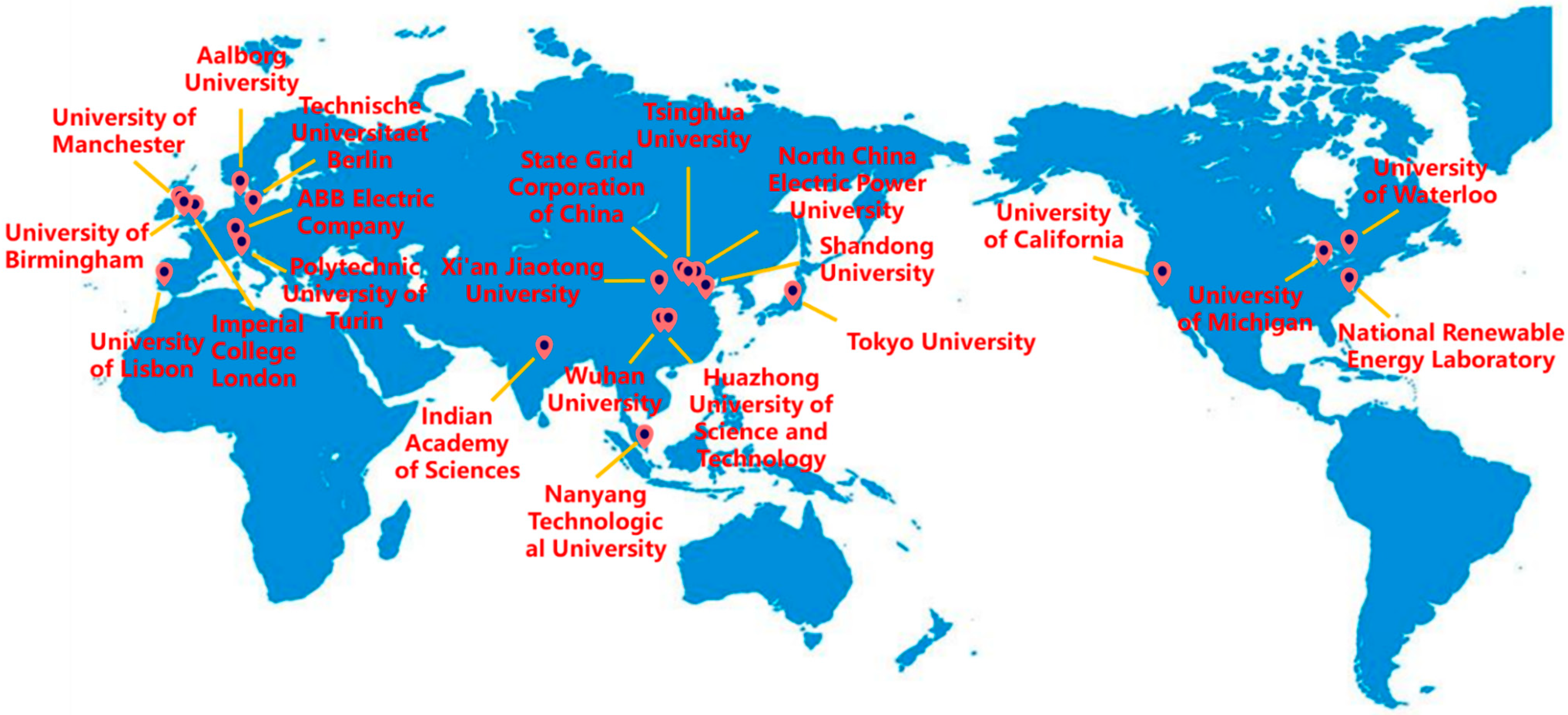
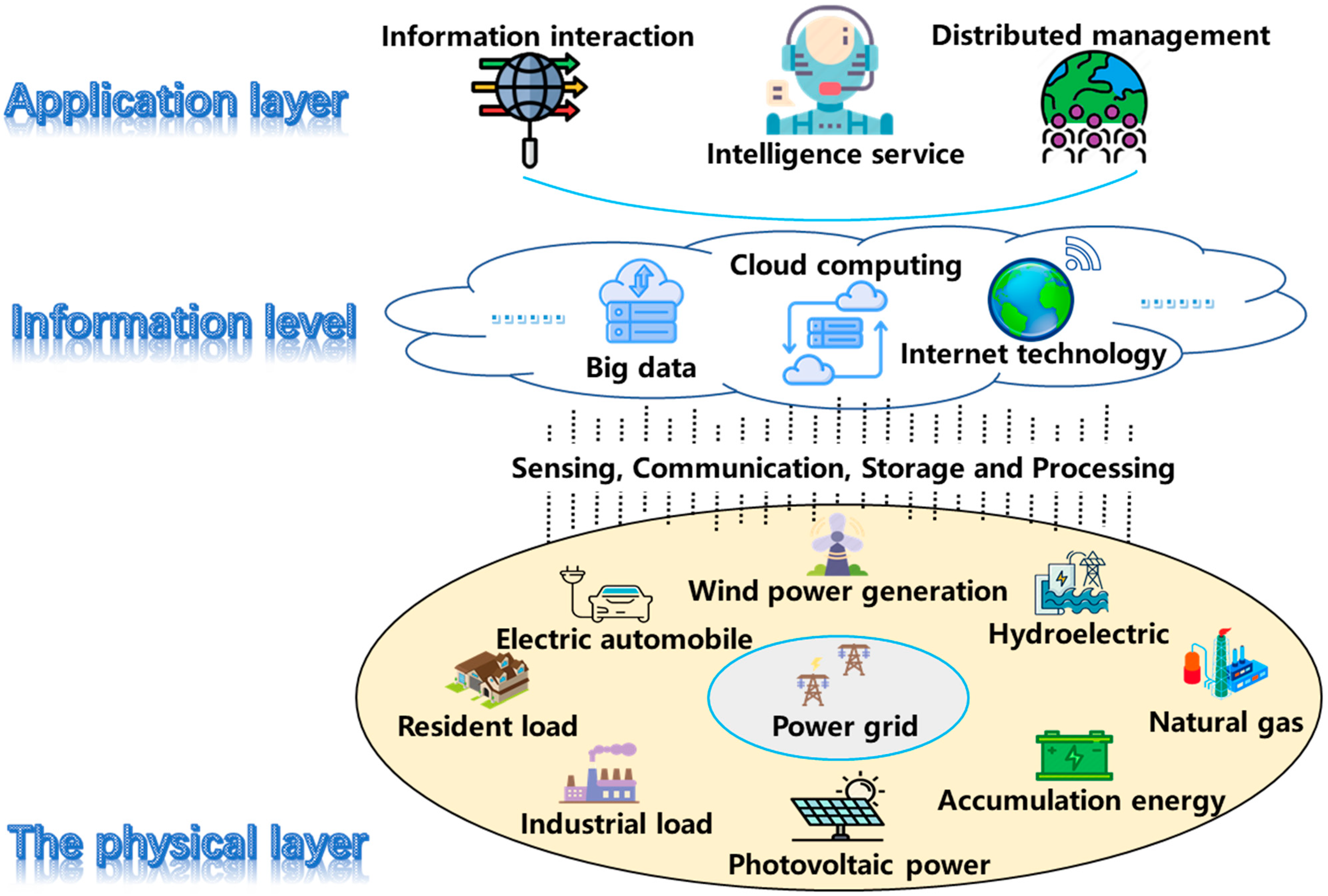
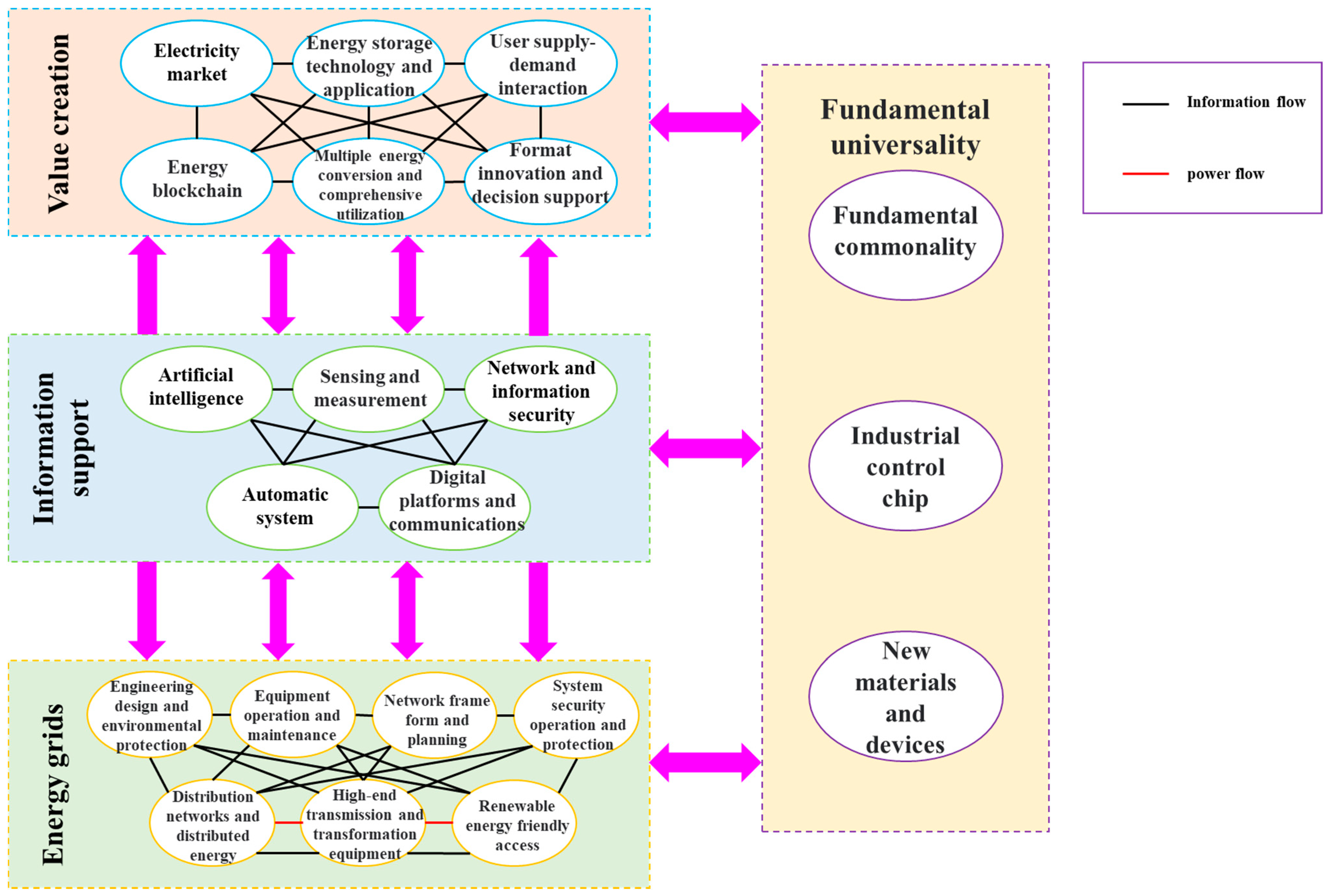
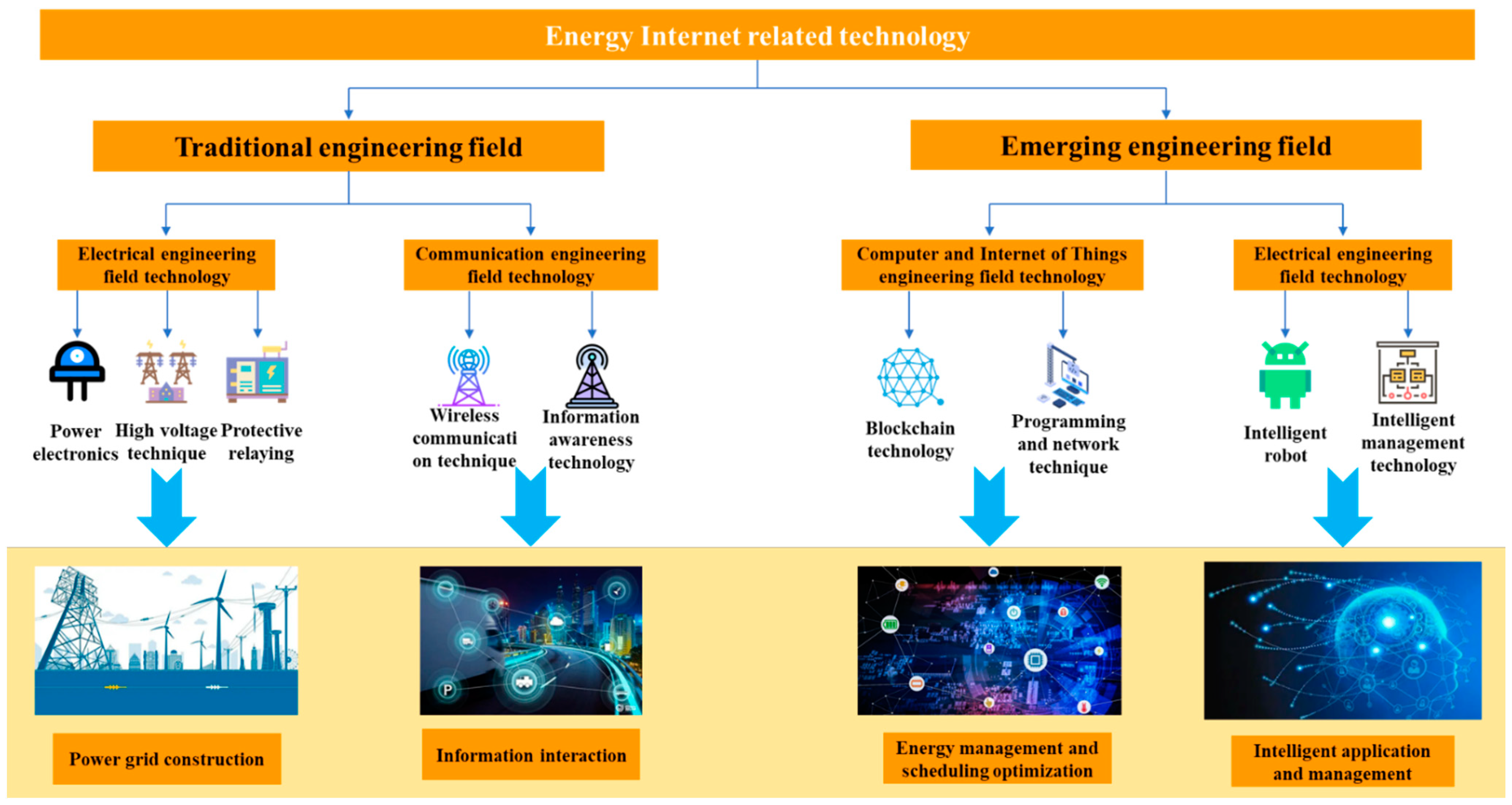
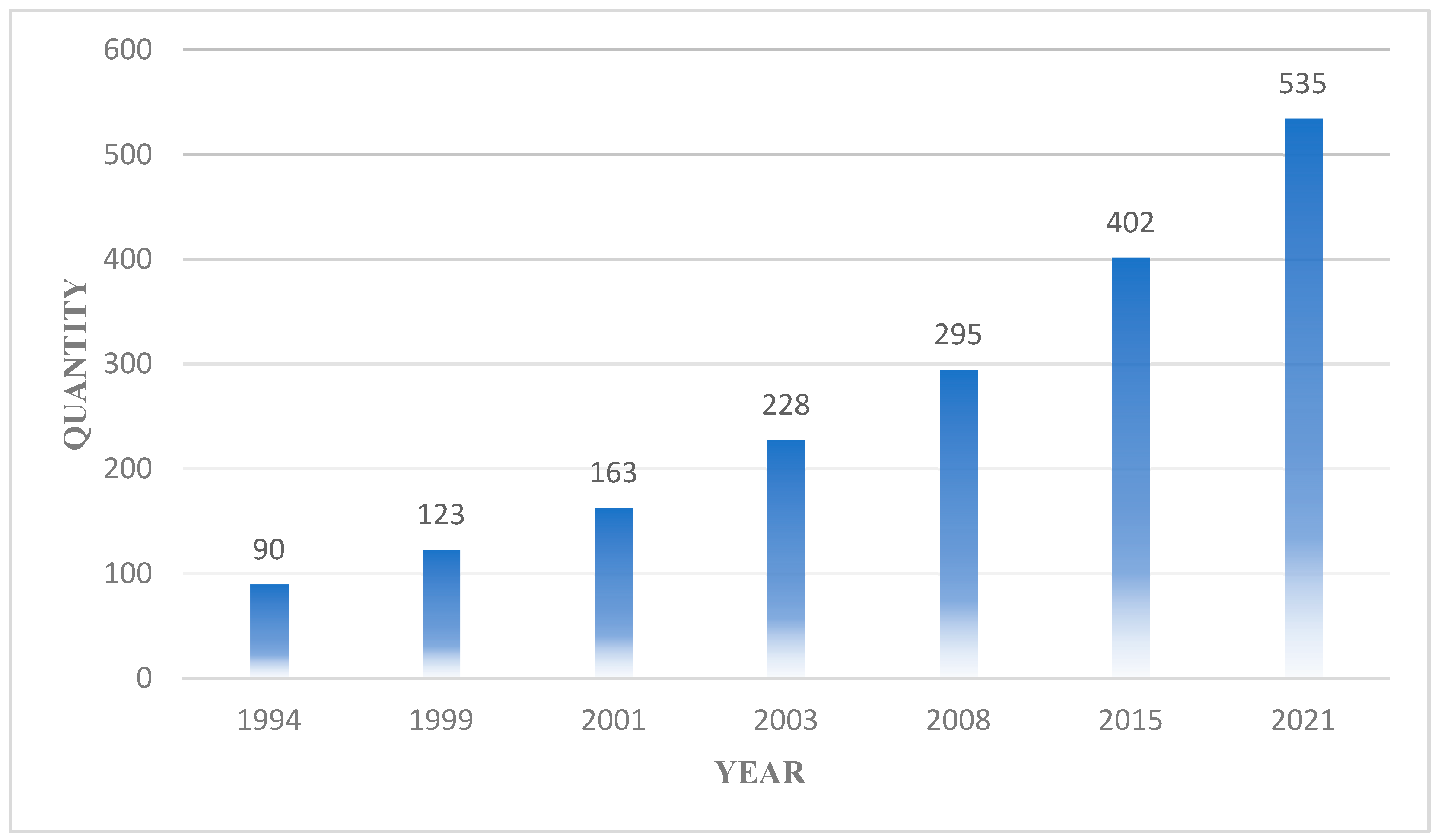
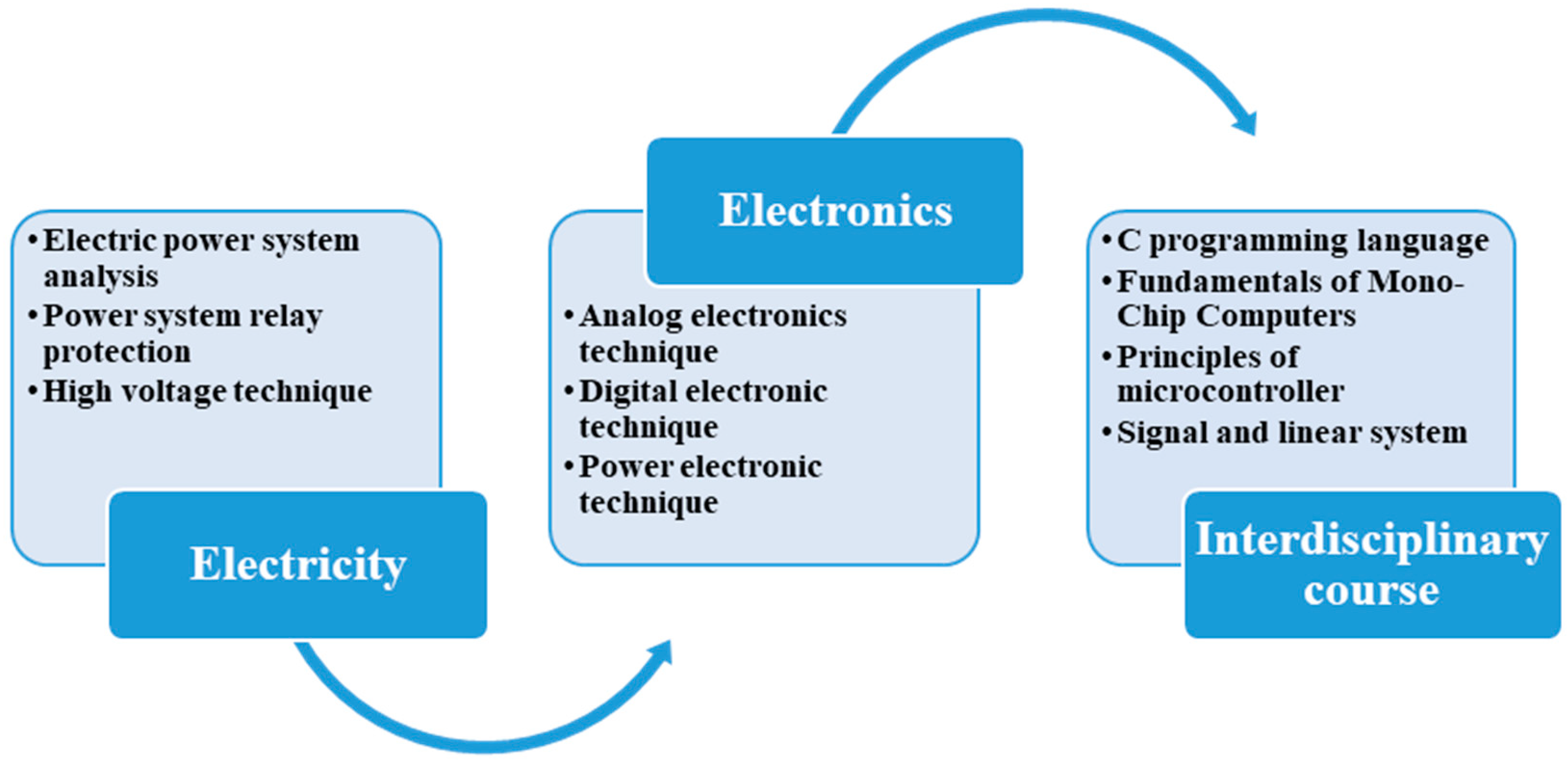

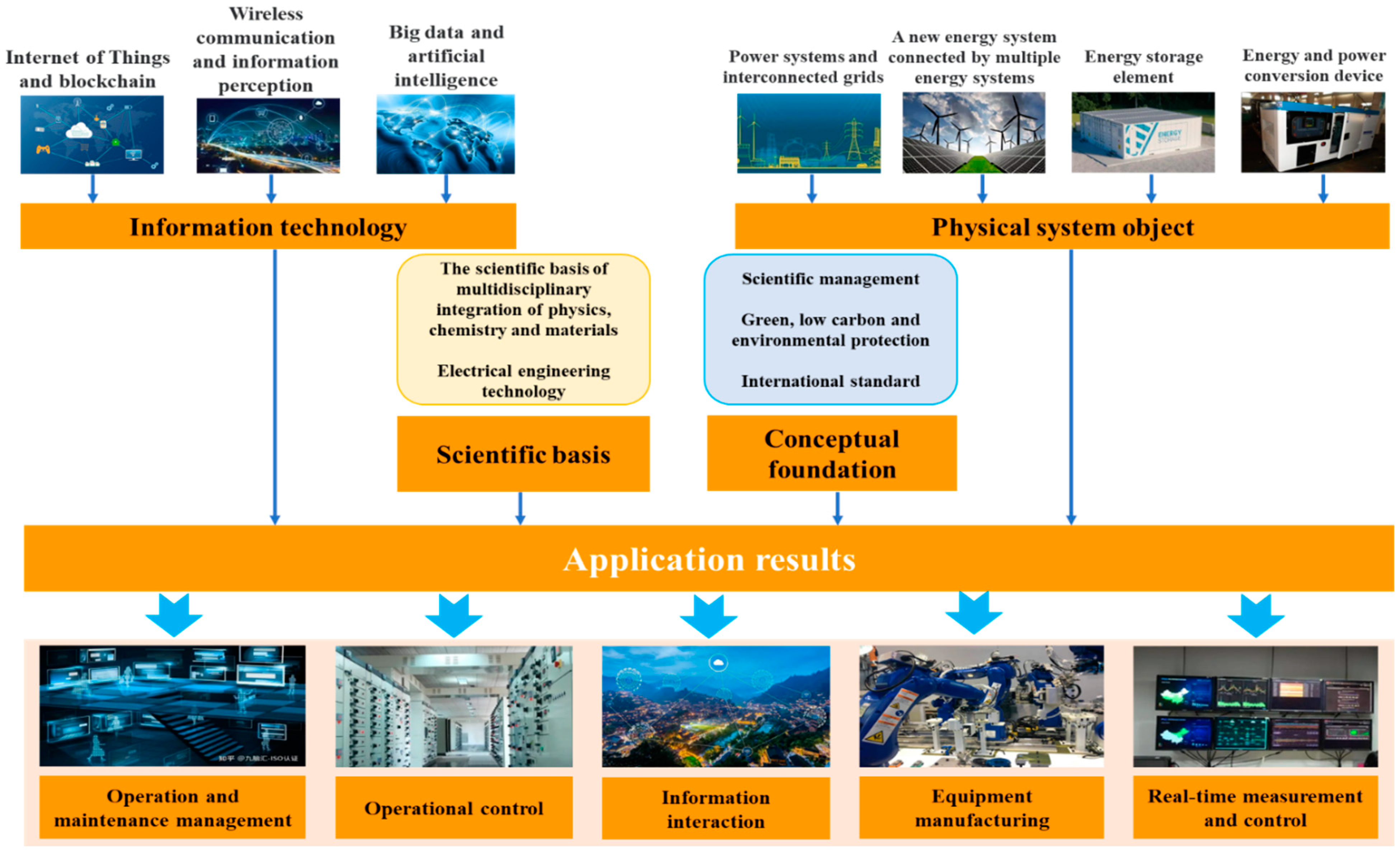
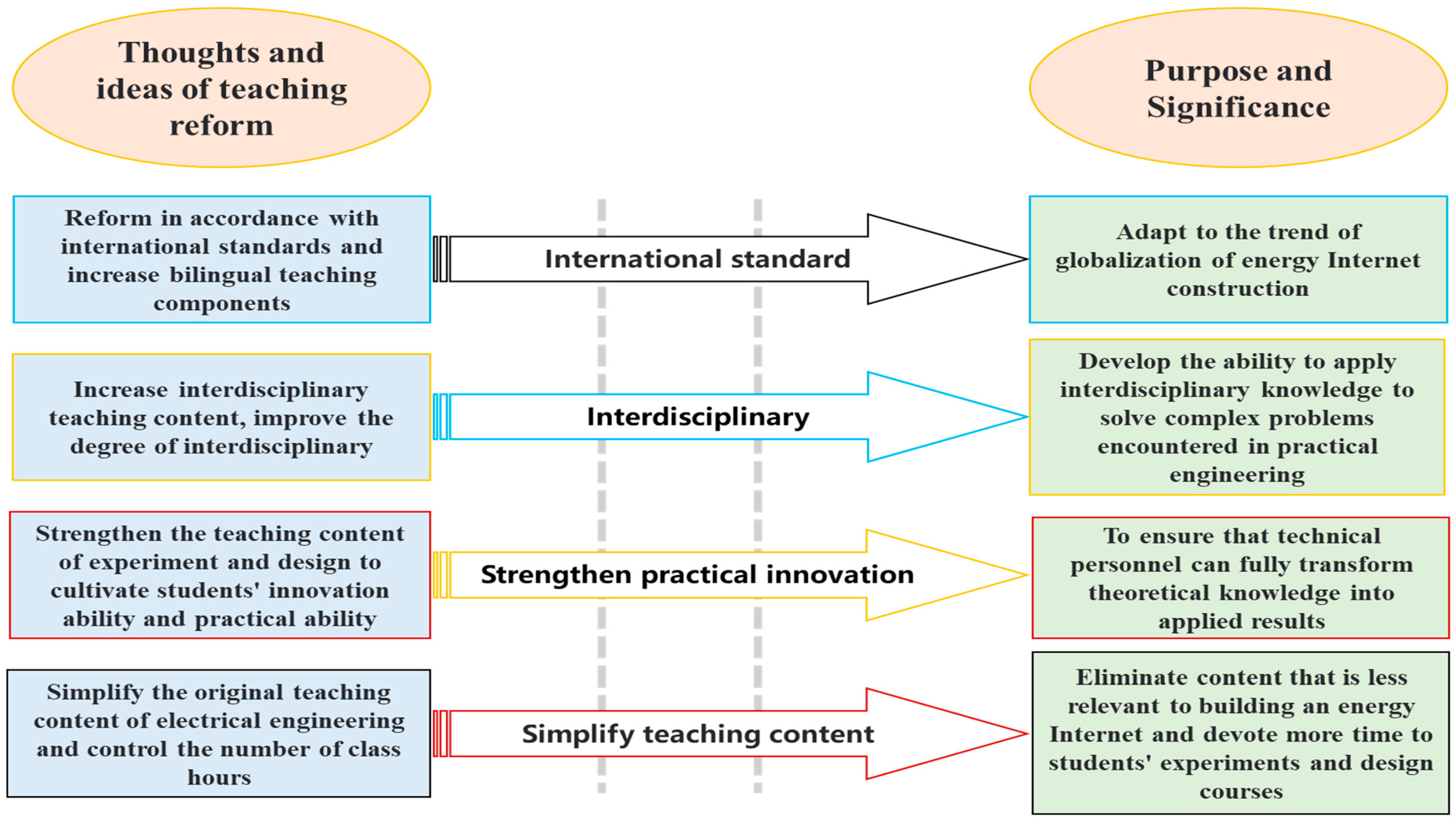

| Essential Feature | Specific Connotation |
|---|---|
| Renewable | Renewable energy is the main source of energy supply for Energy Internet. Renewable energy power generation is intermittent and volatile, and its large-scale access will impact the stability of the power grid, thus promoting the transformation of the traditional energy network into Energy Internet [25]. |
| Distributed | Renewable energy sources are diverse and geographically dispersed. For the most efficient collection and use of renewable energy, networks for on-site collection, storage and use of energy need to be established. These energy networks are individually small in scale and widely distributed, and each micro energy network constitutes a node of the Energy Internet. These elements constitute the distributed characteristics of the Energy Internet [26]. |
| Interconnectivity | Large-scale distributed micro-energy networks cannot guarantee self-sufficiency and need to be connected for energy exchange to balance energy supply and demand [27]. |
| Openness | Energy Internet should be a peer-to-peer, flat and two-way energy flow sharing network. Power generation devices, energy storage devices and loads can be “plug and play”, which can achieve real-time and efficient transmission of energy [28]. |
| Intelligent | Energy generation, transmission, conversion and use of energy in Energy Internet should have a certain level of intelligence. The existence of intelligence makes the monitoring, management and maintenance of Energy Internet more convenient [29]. |
| Chinese Universities | Founding Time of Electrical Engineering Discipline (Year) | America Universities | Founding Time of Electrical Engineering Discipline (Year) |
|---|---|---|---|
| University of Communications |
| Columbia University |
|
| Tongji University |
| Cornell University |
|
| Zhejiang University |
| Princeton University |
|
| Southeast University |
| University of Texas |
|
| Tsinghua University |
| Massachusetts Institute of Technology |
|
| Course Categories | Curriculum Name | |
|---|---|---|
| Electricity courses |
|
|
| Electronics courses |
|
|
| Related subject course |
|
|
| Practical and design courses |
|
|
| Course Categories | Curriculum Name | |
|---|---|---|
| Electrical engineering courses |
|
|
| Information Technology and control theory courses |
|
|
| Energy management and energy conversion courses |
|
|
| Practical and design courses |
|
|
Publisher’s Note: MDPI stays neutral with regard to jurisdictional claims in published maps and institutional affiliations. |
© 2022 by the authors. Licensee MDPI, Basel, Switzerland. This article is an open access article distributed under the terms and conditions of the Creative Commons Attribution (CC BY) license (https://creativecommons.org/licenses/by/4.0/).
Share and Cite
Zhang, D.; Tian, J.; Goh, H.-H.; Liu, H.; Li, X.; Zhu, H.; Wu, X. The Key Technology of Smart Energy System and Its Disciplinary Teaching Reform Measures. Sustainability 2022, 14, 14207. https://doi.org/10.3390/su142114207
Zhang D, Tian J, Goh H-H, Liu H, Li X, Zhu H, Wu X. The Key Technology of Smart Energy System and Its Disciplinary Teaching Reform Measures. Sustainability. 2022; 14(21):14207. https://doi.org/10.3390/su142114207
Chicago/Turabian StyleZhang, Dongdong, Jun Tian, Hui-Hwang Goh, Hui Liu, Xiang Li, Hongyu Zhu, and Xinzhang Wu. 2022. "The Key Technology of Smart Energy System and Its Disciplinary Teaching Reform Measures" Sustainability 14, no. 21: 14207. https://doi.org/10.3390/su142114207
APA StyleZhang, D., Tian, J., Goh, H.-H., Liu, H., Li, X., Zhu, H., & Wu, X. (2022). The Key Technology of Smart Energy System and Its Disciplinary Teaching Reform Measures. Sustainability, 14(21), 14207. https://doi.org/10.3390/su142114207








